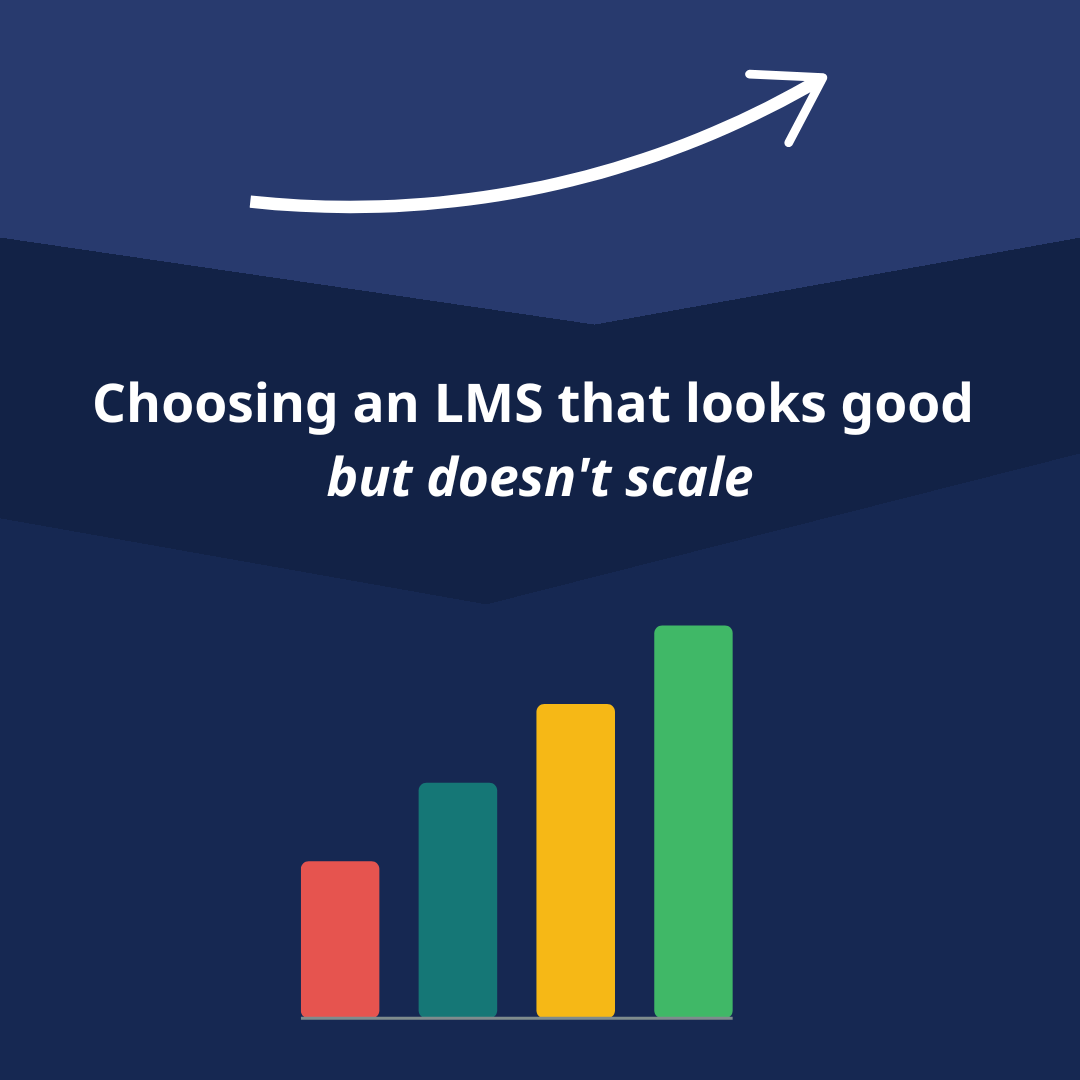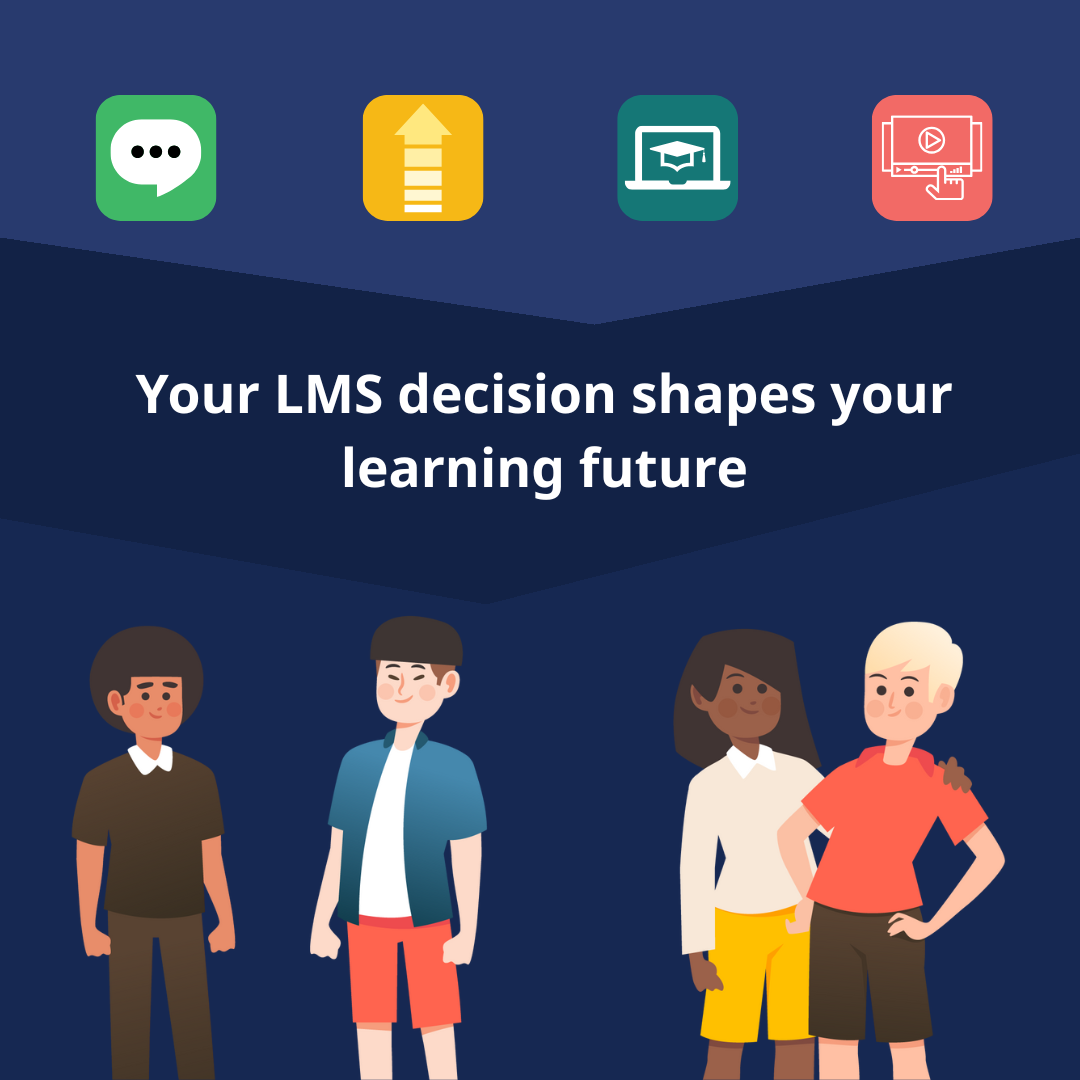Choosing the Right LMS: 5 Mistakes Organisations Make (and How to Avoid Them)
Help! I need an LMS!
The heat is on. Your organisation needs a Learning Management System (LMS), and you need it yesterday. With dozens of vendors promising the world and budgets tightening across industries, it’s tempting to rush the decision. But here’s the uncomfortable truth: many organisations make expensive mistakes when choosing an LMS, only to discover months later that their ‘perfect’ solution is anything but.
The stakes are higher than you might think. A poorly chosen LMS wastes money, frustrates learners, overwhelms administrators, and can set your training programmes back by years. The good news? Most of these pitfalls are entirely avoidable if you know what to look for.
We’ve worked with various LMS options over the years, and clients in all shapes and sizes, from full-scale universities to boutique corporate trainers. So we would like to weigh in with some of that experience and tell you about some of the things we have seen.
Here are the five most common mistakes organisations make when choosing an LMS, and more importantly, how to avoid them.

Mistake 1: Choosing an LMS That Looks Good but Doesn’t Scale
The Trap: It’s lovely to look at: The interface is sleek and modern, and your stakeholders are impressed. But beneath that polished exterior lies a fundamental problem: as soon as your organisation goes beyond 100 concurrent users, the platform just can’t keep up. When you want to add another server to bolster the capacity, the setup is fiendishly difficult to achieve.
When you need to onboard hundreds of new users, build complex course structures, or handle multiple departments with different requirements, these systems crumble under the pressure. This can include both hardware and software obstacles that will be expensive in time, effort and cold hard cash.
The Reality Check: Being able to handle more users is certainly important. However, true scalability means the platform can adapt to all your evolving needs: new types of content, additional integrations, changing organisational structures, and new ways of delivering learning.
How to Avoid This Mistake: Look beyond the surface. Ask pointed questions about the platform’s architecture, customisation capabilities, and track record with organisations similar to yours. Request case studies showing how the platform has evolved with growing companies. Most importantly, think about where your organisation will be in three to five years, not just where it is today.
At TLS, we’ve built our expertise around Moodle precisely because of its unmatched flexibility and scalability. Unlike proprietary platforms with fixed limitations, Moodle’s open-source architecture allows us to customise solutions that grow seamlessly with your organisation.
Right now Moodle’s own documentation records sites that have:
-
- Up to 1 000 000 users
- Up to 50 000 courses
- Up to 5 000 users per course
- Up to 50 roles
- Up to 100 course categories nested up to about 10 levels deep.
Can the LMS you’re considering do that?
Mistake 2: Ignoring the User Experience (For Both Learners and Admins)
The Trap: It’s got all the bells and whistles but how accessible is it for the people who will actually use the LMS daily. Do they need hours of training just to be able navigate it?
How does a particular LMS handle learner engagement and administrative efficiency? When learners struggle to navigate the platform, find courses, or access content on their mobile devices, usage plummets. Similarly, when administrators spend hours on tasks that should take minutes, operational costs skyrocket.
Learners want slick navigation, mobile access and content delivered like their favourite entertainment providers.
Administrators need platforms that make course creation, user management, and reporting straightforward. Demanding learning curves and unintuitive interfaces lead to errors, frustration and wasted time.
How to Avoid This Mistake: Involve actual end-users in your evaluation process. Get learners and administrators hands-on with platforms you’re considering, focusing on mobile responsiveness and navigation intuitiveness.
At TLS, user experience is central to every solution we build. Our Moodle customisations prioritise both learner engagement and administrative efficiency, creating courses that captivate and functionality that flows.
Mistake 3: Overlooking Integration with Existing Systems
The Trap: Your LMS doesn’t exist in a vacuum. It needs to work harmoniously with your existing HR systems, payroll platforms, content management tools, and other business applications. Yet many organisations treat LMS selection as if it’s an isolated decision.
Poor integration leads to manual data entry, inconsistent user records, and fragmented reporting. Your HR team ends up updating information across multiple platforms while training data remains isolated from broader performance metrics.
Common Integration Challenges:
- HR Systems: User provisioning, role assignments, and organisational hierarchy updates
- Payroll/Finance: Training completion tracking tied to compensation or compliance requirements
- Content Libraries: Existing training materials, document repositories, and multimedia resources
- Communication Tools: Email systems, intranets, and collaboration platforms
- Analytics Platforms: Centralised reporting and business intelligence tools
How to Avoid This Mistake: Map your existing system before you begin evaluating LMS options. Identify critical integration points and make them non-negotiable requirements. Ask vendors for specific integration examples and API documentation.
TLS can create integrations that eliminate data silos and streamline workflows. Our deep Moodle expertise means we can connect your LMS with virtually any existing system, from major HR platforms to ERP systems and custom applications, ensuring your LMS enhances rather than complicates your existing processes.
Mistake 4: Forgetting About Ongoing Support and Training
The Trap: Setting up an LMS is often viewed as a ‘one and done’ project. Choose the platform, configure it, launch it, and walk away. This is one of the most expensive mistakes organisations make: underestimating the importance of ongoing support and training.
Your LMS is not a ‘set it and forget it’ solution. As technology and user needs change, new features become available. Without proper ongoing support, your LMS can quickly become outdated and eventually ineffective. Additionally, security and performance are increasingly critical elements that need proper attention. Neglecting their maintenance will end in tears.
Many organisations discover too late that their LMS vendor provides minimal support or charges hefty fees for quality assistance. By then, they’re locked in and facing expensive decisions about additional investments or platform migrations.
How to Avoid This Mistake: Evaluate support offerings as rigorously as you evaluate features. Understand what’s included versus what costs extra and ask about response times and the vendor’s development track record.
TLS provides continuous support that goes far beyond basic technical assistance. We offer training on demand, proactive monitoring, regular optimisation reviews, and strategic guidance on new Moodle capabilities. Our South African base means local support in your time zone, with team members who understand the local business and educational environment.
Mistake 5: Choosing on Price Alone
The Trap: Budget constraints are real, and the temptation to choose the cheapest option is understandable. However, selecting an LMS based solely on price often leads to much higher total costs over time.
The ‘cheapest’ LMS might seem attractive at first, but if it lacks any of the previous four elements we’ve discussed, you’ll find yourself paying far more in the long run. These hidden costs can include:
Immediate Additional Costs:
- Essential features sold as expensive add-ons
- Professional services for basic setup and configuration
- Third-party tools to fill functionality gaps
- Extended implementation timelines due to platform limitations
Long-term Financial Impact:
- Lower user adoption leading to wasted training investments
- Administrative inefficiencies increasing operational costs
- Limited scalability requiring costly platform migrations
- Poor support leading to extended downtime and lost productivity
How to Avoid This Mistake: Focus on value rather than price. The most cost-effective LMS meets your needs efficiently over the long term, even with a higher initial investment.
At TLS our Moodle-based solutions combine affordability with enterprise-grade capabilities. As a South African company, we employ our local expertise and favourable exchange rates to deliver world-class LMS solutions at costs that international providers simply can’t match. You get premium functionality without premium pricing.

Conclusion Your LMS Decision Shapes Your Learning Future:
Nelson Mandela once said, ‘May your choices reflect your hopes, not your fears.’ This wisdom applies perfectly to LMS selection. Too often, organisations make decisions driven by fear – fear of overspending, fear of complexity, fear of change. But the most successful LMS implementations come from organisations that choose based on their hopes for enhanced learning, improved efficiency, and long-term growth. The five mistakes we’ve outlined can derail even the best-intentioned training programmes, but they’re entirely avoidable with the right approach and partner.
At The Learning Studio, we specialise in building affordable, scalable, and future-ready Moodle solutions. Contact us today to explore the right LMS for your needs.
Kerushan Naidoo
Head of Moodle Development
Kerushan has a decade of experience working wonders with Moodle. That’s why we rely on this man for the winning plan. He is an active Moodle community member and, either knows of the perfect plugin for your needs, or will customise and develop a plugin to meet your unique requirements.
